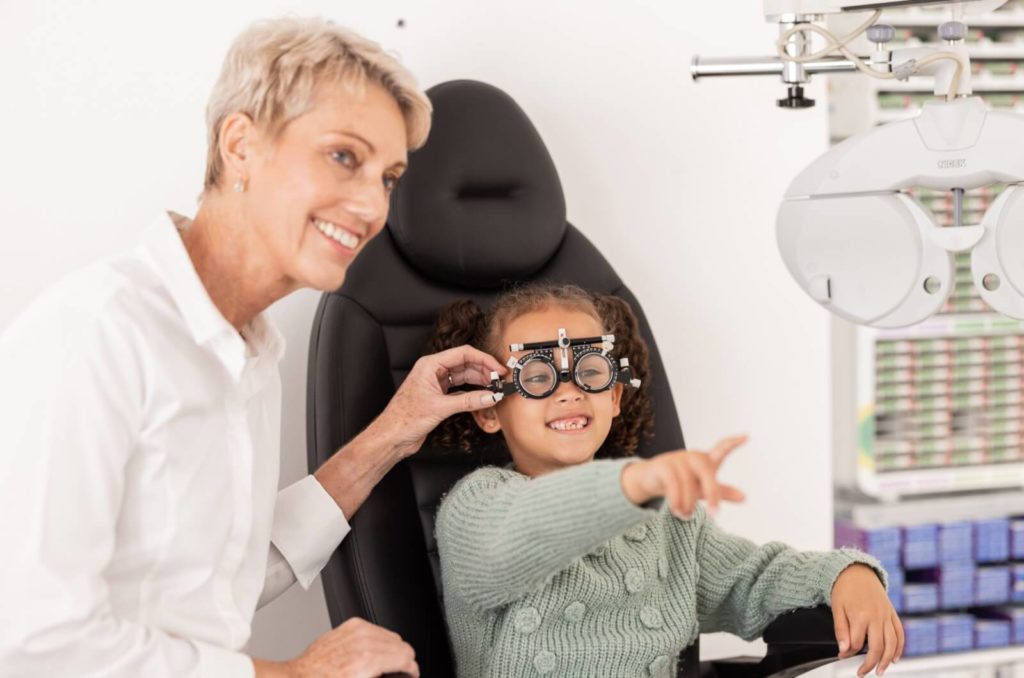Myopia is a common refractive error that often develops during childhood. However, it can worsen over time due to environmental factors, and because of our eye’s growth during childhood and early adolescence.
While myopia cannot be reserved entirely, we can help prevent myopia from worsening using myopia control therapies.
Understanding Myopia Development
Myopia is a common refractive error that generally develops during childhood, where close objects are clear but distant objects are blurry.
Myopia occurs if the eyeball is too long or the cornea too curved. When light enters an eye with myopia, it focuses in front of the retina instead of directly on it, resulting in blurry vision. While myopia itself isn’t considered a serious eye condition, high myopia increases the risk of many eye conditions and diseases, like retinal detatchment and glacoma.
Factors Contributing to Myopia Development
The prevalence of myopia is increasing—most commonly, the onset of myopia occurs between the ages of 6 and 14 years old. As myopia rates rise, the urgency for myopia control increases.
While it typically develops during childhood, genetics and environmental factors can also influence the severity and development of myopia. Since myopia tends to run in families, a child has a higher chance of developing myopia if one or both of their parents are also nearsighted.
Lifestyle influences like spending less time outdoors and prolonged exposure to close-up work contributes to myopia development. Children who spend more time outdoors are less likely to develop myopia as natural light exposure and looking at distant objects help maintain proper eye growth and reduce myopia progression.
Can Myopia Be Reversed?
The short answer is no, myopia cannot be entirely reversed. Once the eye has elongated or the cornea has become too curved, these structural changes cannot be undone. However, there are ways to slow its progression, and prevent it from worsening.
Importance of Myopia Control
To prevent myopia from worsening to high myopia, several therapies have been found to be effective in slowing myopia progression, referred to as myopia control. These treatments can work by altering the eye’s focusing mechanism or reducing eye strain so the shape of the eye doesn’t continue to elongate.
Myopia Control Therapies
Selecting the most suitable myopia control method depends on various factors, including age, degree of myopia, lifestyle, and personal preferences. Establishing a consistent routine and regularity in follow-up visits with your optometrist to monitor myopia progression is vital for these treatments.
At Headwaters Optometry, we focus on 3 distinct therapies:
- MiSight Contact Lenses: These daily disposable lenses use a dual-focus design, with alternating zones for helping to correct myopia by reducing peripheral hyperopic defocus, believed to contribute to eye elongation.
- Low-dose Atropine Drops: Atropine drops are one of the most common forms of myopia control. They help slow myopia progression by relaxing the eye’s focusing mechanism, thereby reducing the stimulus for eye elongation.
- Stellest Lenses: These are specialized eyeglass lenses that incorporate a constellation of lenslets to help create a volume of myopic defocus in front of the retina. This design helps control the elongation of the eyeball.

Schedule a Consultation
Getting ahead of the curve regarding myopia management means taking early action. This helps slow myopia progression, reduces the risk of developing any associated complications, and improves overall ocular health.
Connect with our team at Headwaters Optometry to schedule your myopia control consultation.




